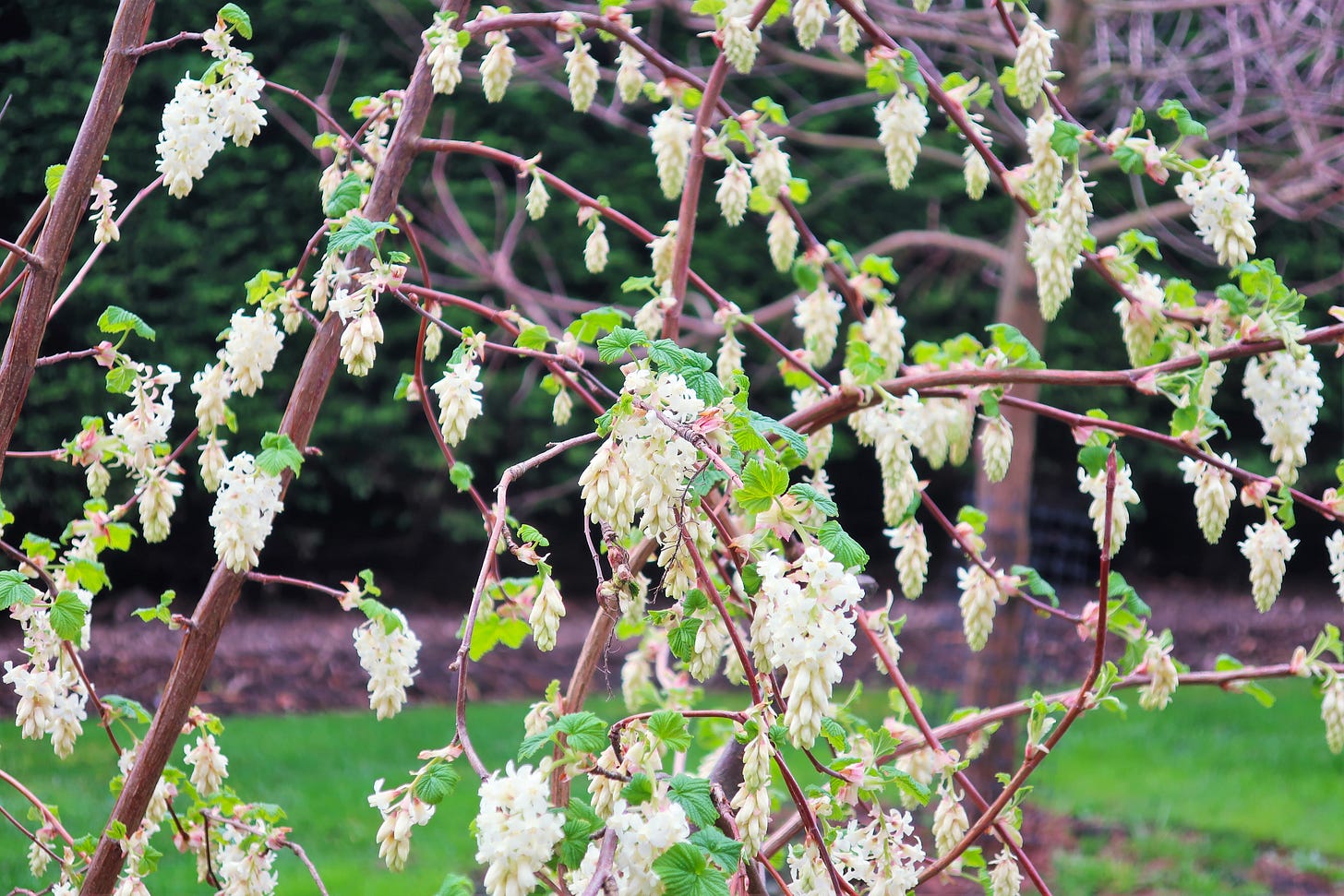Footnotes to a Conversation, March 28, 2022
Soundscapes
I was housesitting in Oak Bay this past week and was struck by how different the sounds were from one part of Victoria to another. In Vic West, I hear float planes taking off in the harbour and traffic picking up and slowing down on the neighbouring through road. There was far less traffic noise where I was in Oak Bay but much more residential noise, from a deck being built in the backyard to trees being chopped down and carpet cleaning across the street. Fog horns were melancholic and atmospheric.
“Soundscapes define communities – their boundaries, their actors, their geographic intricacies, and industries … One of the core properties of sound is its ephemerality – it does not endure long past its production, and even a recording is but a subjective representation of reality – it is easy to forget, even though it is one of our primary senses. It is critical that we do not forget about sound, because of its decidedly cultural role within our acoustic ecology.” [Folklife]
Eavesdropping
There is a completely different, unexpected soundscape beneath our feet. “Ecologists have long known that the ground beneath our feet is home to more life, and more diverse life, than almost any other place on Earth” and “every soil organism produces its own soundtrack. Root-munching larvae emit short clicks as they break the fibres of their meal. Worms rustle as they crawl through tunnels. So do plant roots as they push past grains of soils … grubs sing to warn each other away.” [BBC Future]
Afterlife
It began life as a luxury hotel in 1954. Since that time, it’s been a refugee camp and a military headquarters. Almost 70 years later, it still houses thousands of people, some of whom are the third generation to live there. [BBC Culture]
Give Me Air & Water
I am intrigued by tillandsia, also known as air plants. They don’t need to be potted as their roots are only used to anchor them to a branch or another plant. According to Wikipedia, “Their leaves, more or less silvery in color, are covered with specialized cells (trichomes) capable of rapidly absorbing water that gathers on them.” I now have 2 of them and I suspect there will be more. I spray them every couple of days, give them a bath once a week, and have purchased a special spray that contains the minerals they need to thrive. They don’t live forever. Once they reach a certain size, they form pups and die. [Wikipedia & The Spruce]
Women’s Work I
“Making alcohol is usually depicted as a rugged, manly pursuit. But for millennia, fermented drinks served more as food, rather than an indulgence. (Think of beer as liquid bread.) And instead of factories, it was often made in homes, by women.” [Atlas Obscura]
Women’s Work II
There was a time when lace was as expensive as the finest jewellery. A square centimetre of Point d’Alençon lace represents 7 hours of labour. As with any expensive item, it was smuggled. “Stories are told about bodies being replaced by lace in coffins before being shipped across borders, dogs being wrapped in lace and covered with a larger hide; hollowed out loaves of bread filled with lace, and many other ingenious ways of getting laces to the rich and powerful.” The French Revolution, however, put a lot of women out of work. [JSTOR Daily]
Spring Blooms
The cover photograph is of Indian Plum, also known as Osoberry, Oregon Plum, Squaw Plum, Indian Peach, Bird Cherry, and Skunkbush. It is found from BC’s Lower Mainland to Santa Barbara, California. [Native Plants PNW]
Footnotes to a Conversation is a weekly Monday feature covering an assortment of topics that I’ve come across in the preceding week – books, art, travel, food, and whatever else strikes my fancy. I also post occasional articles on other dates, including frequent book reviews and travel tales.
If you share my love of nature, check out EcoFriendly West, an online publication encouraging environmental initiatives in Western Canada, and Nature Companion, a free nature app for Canada’s four western provinces.





